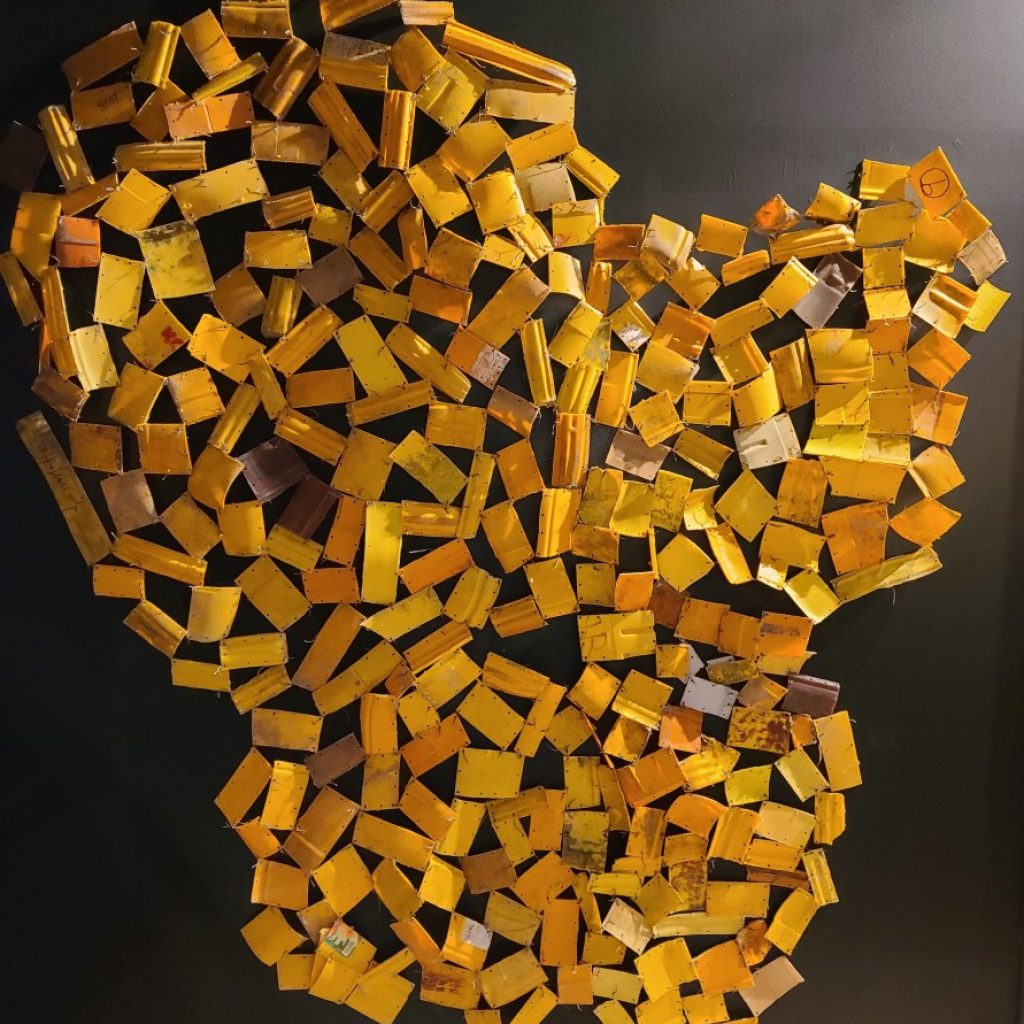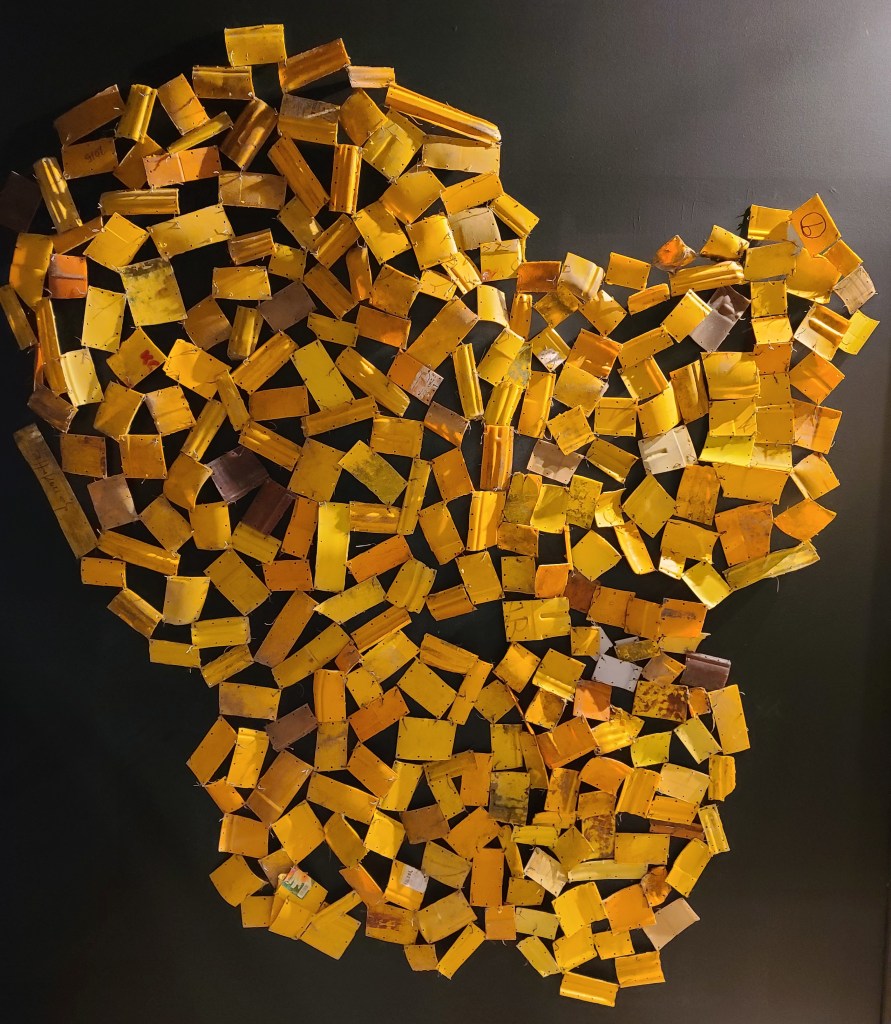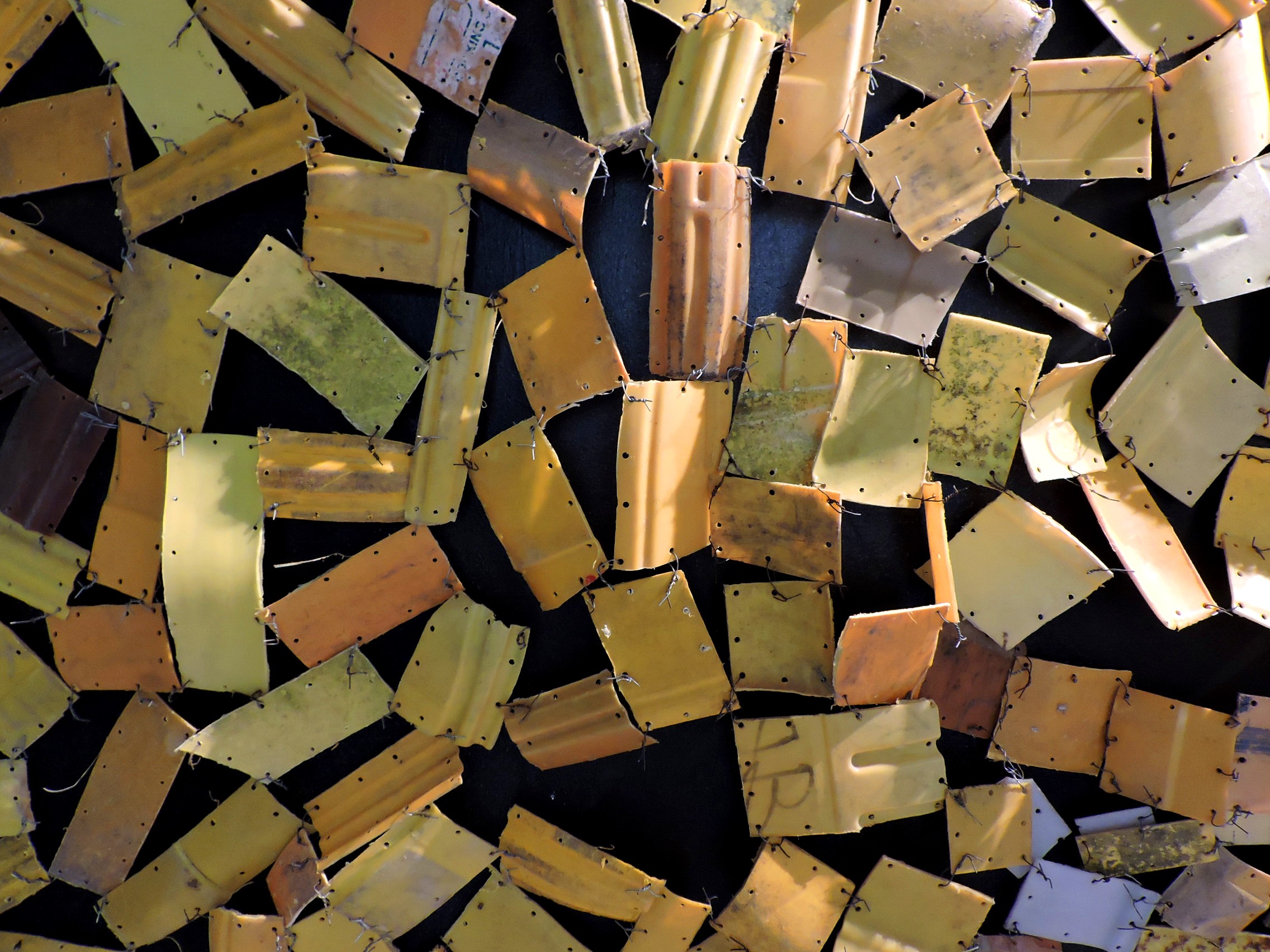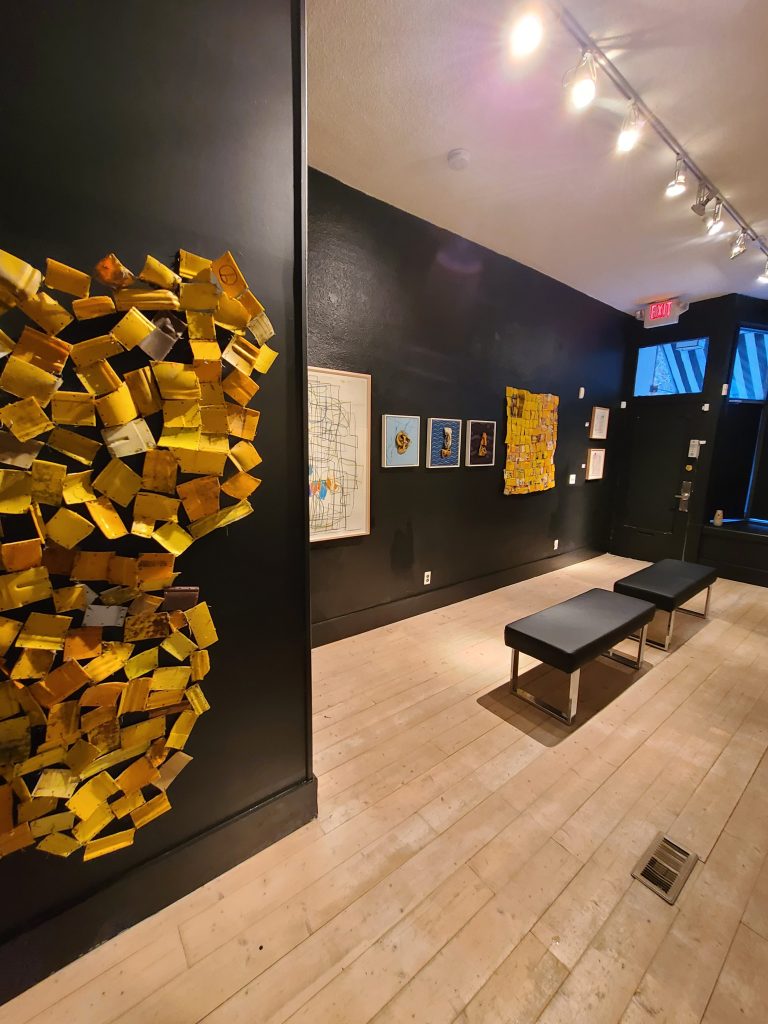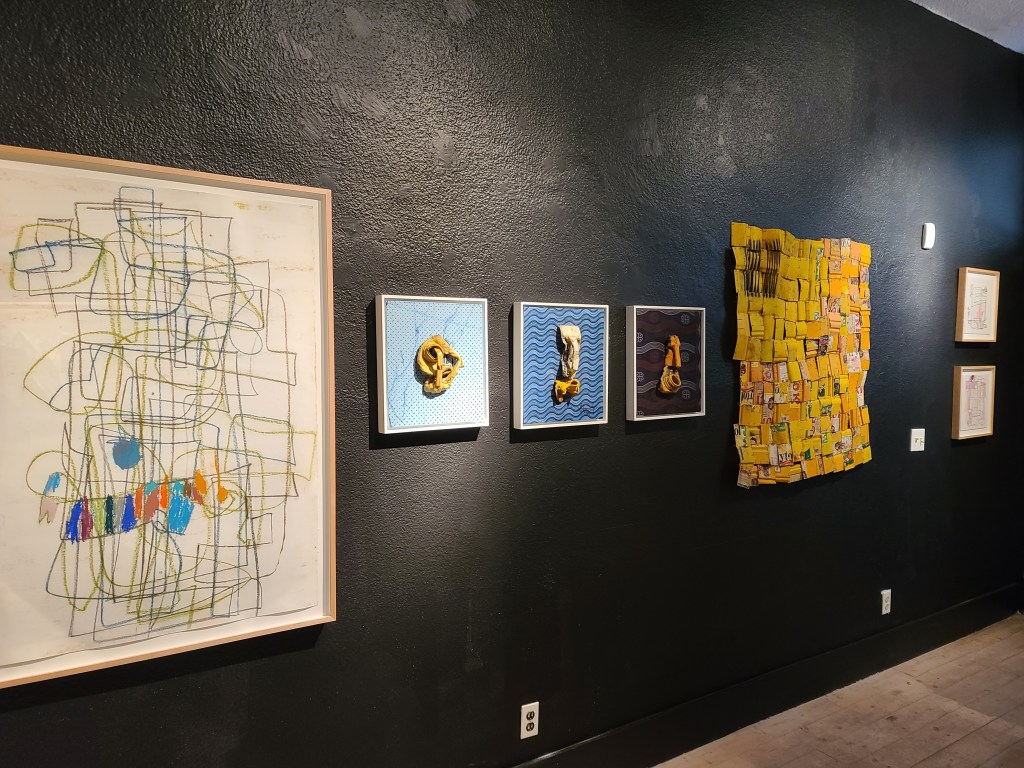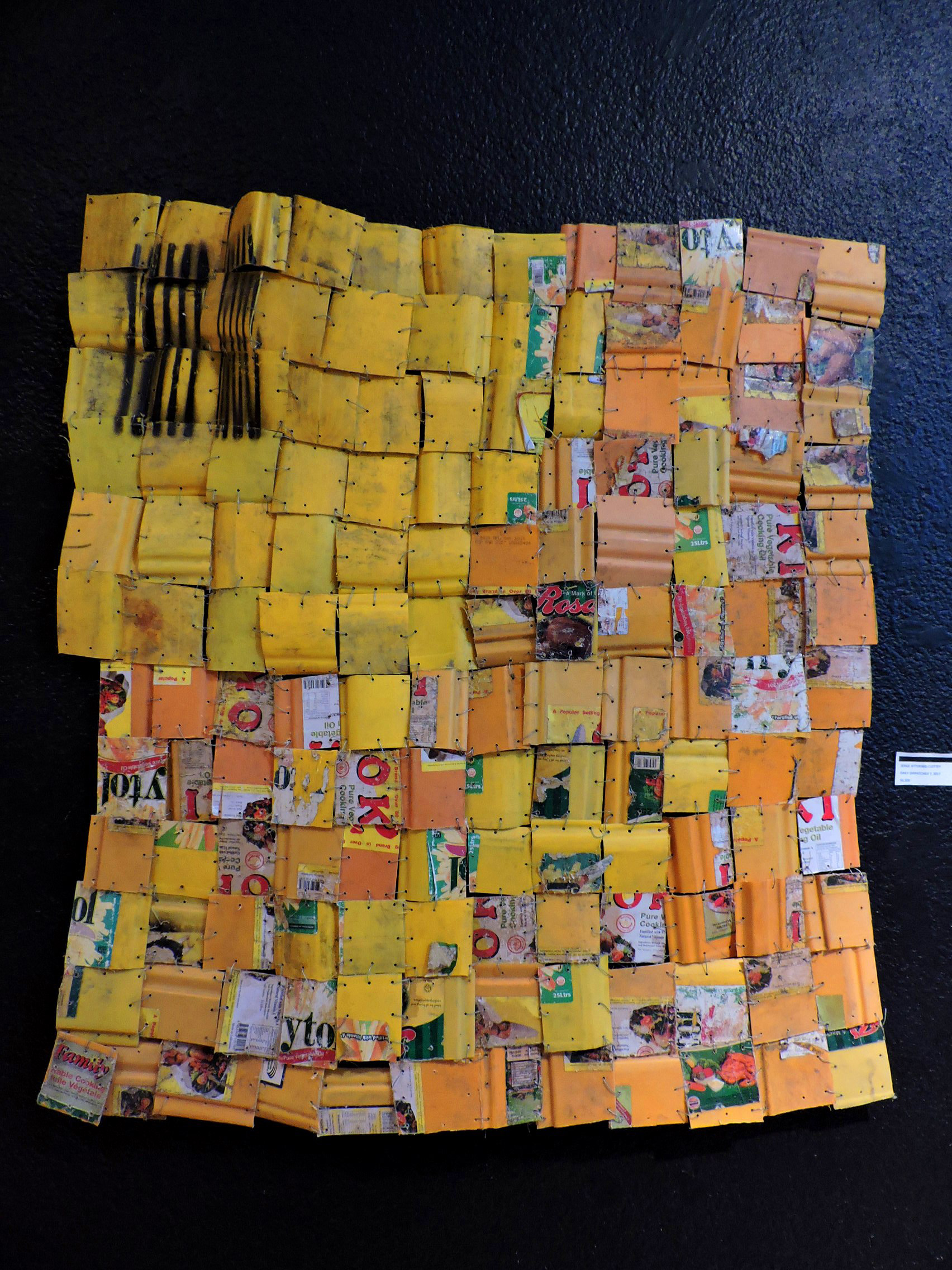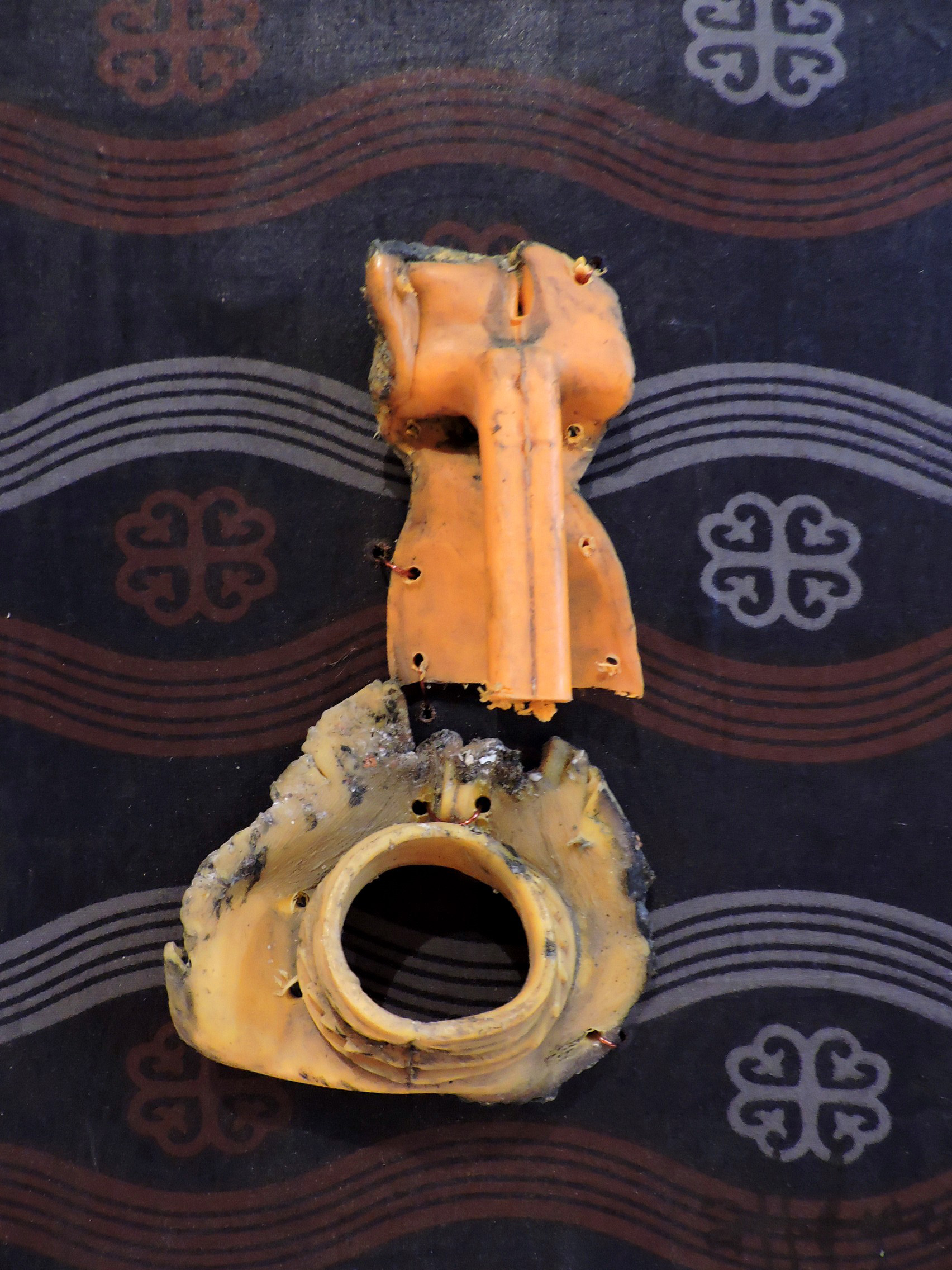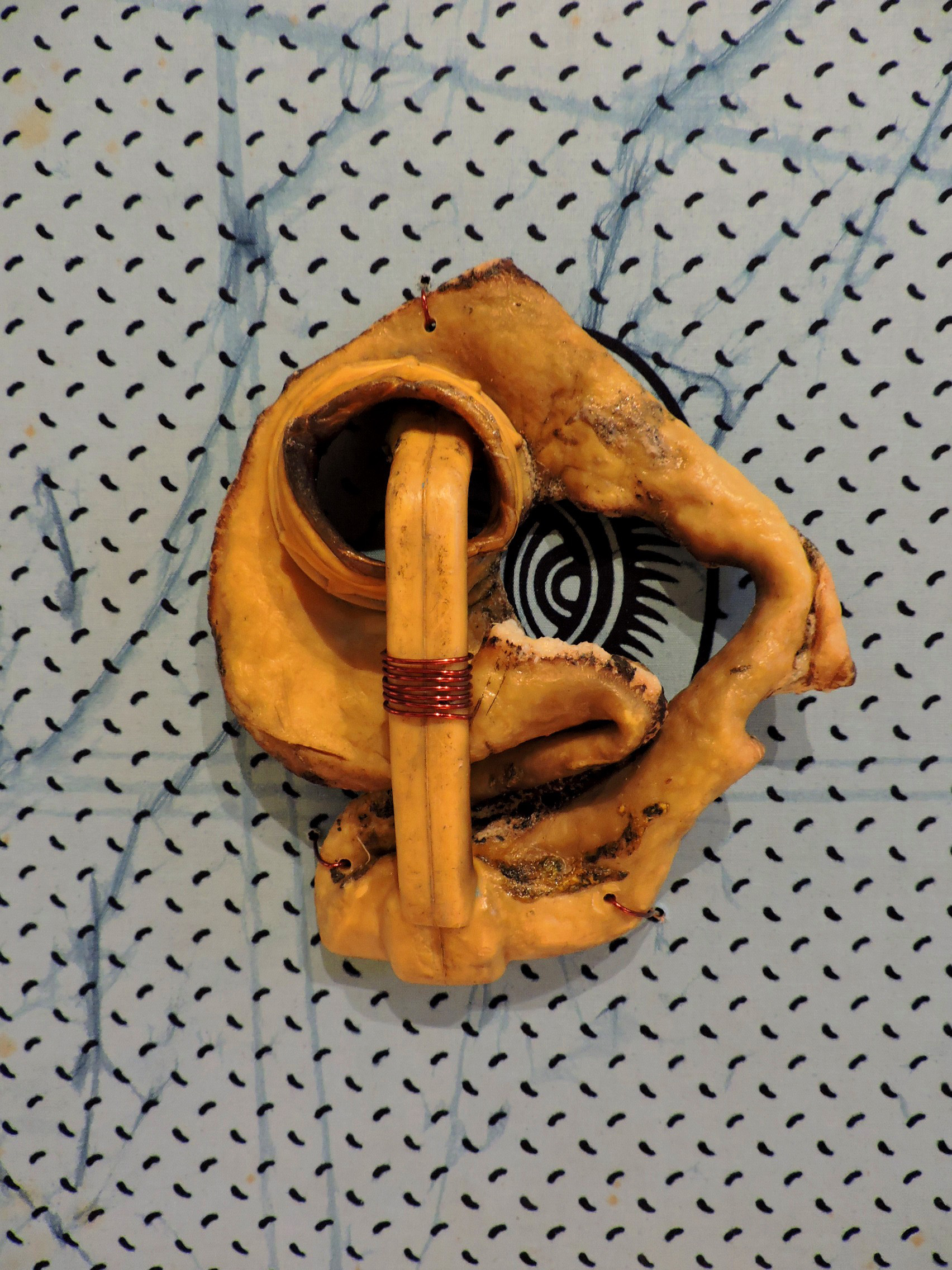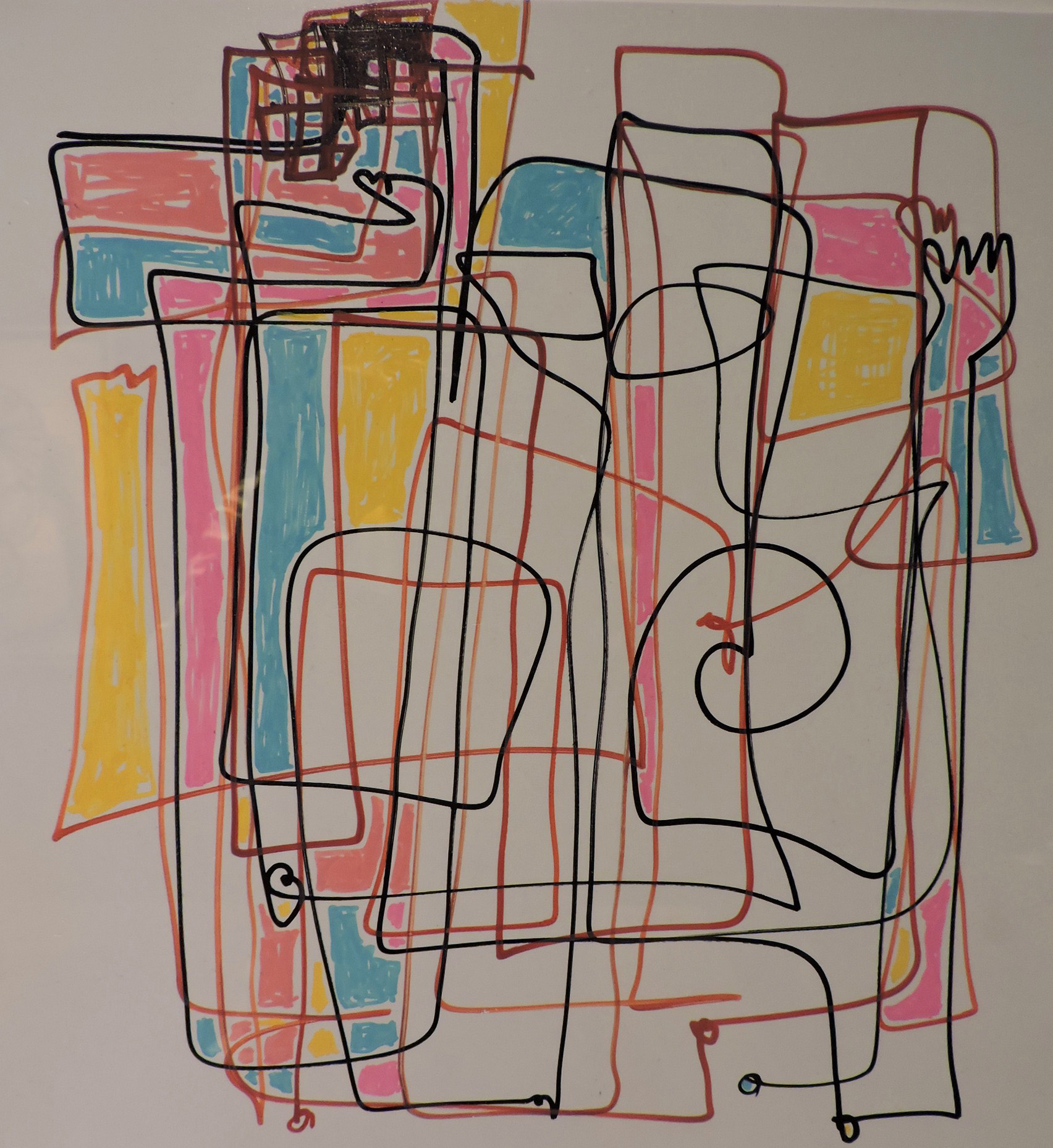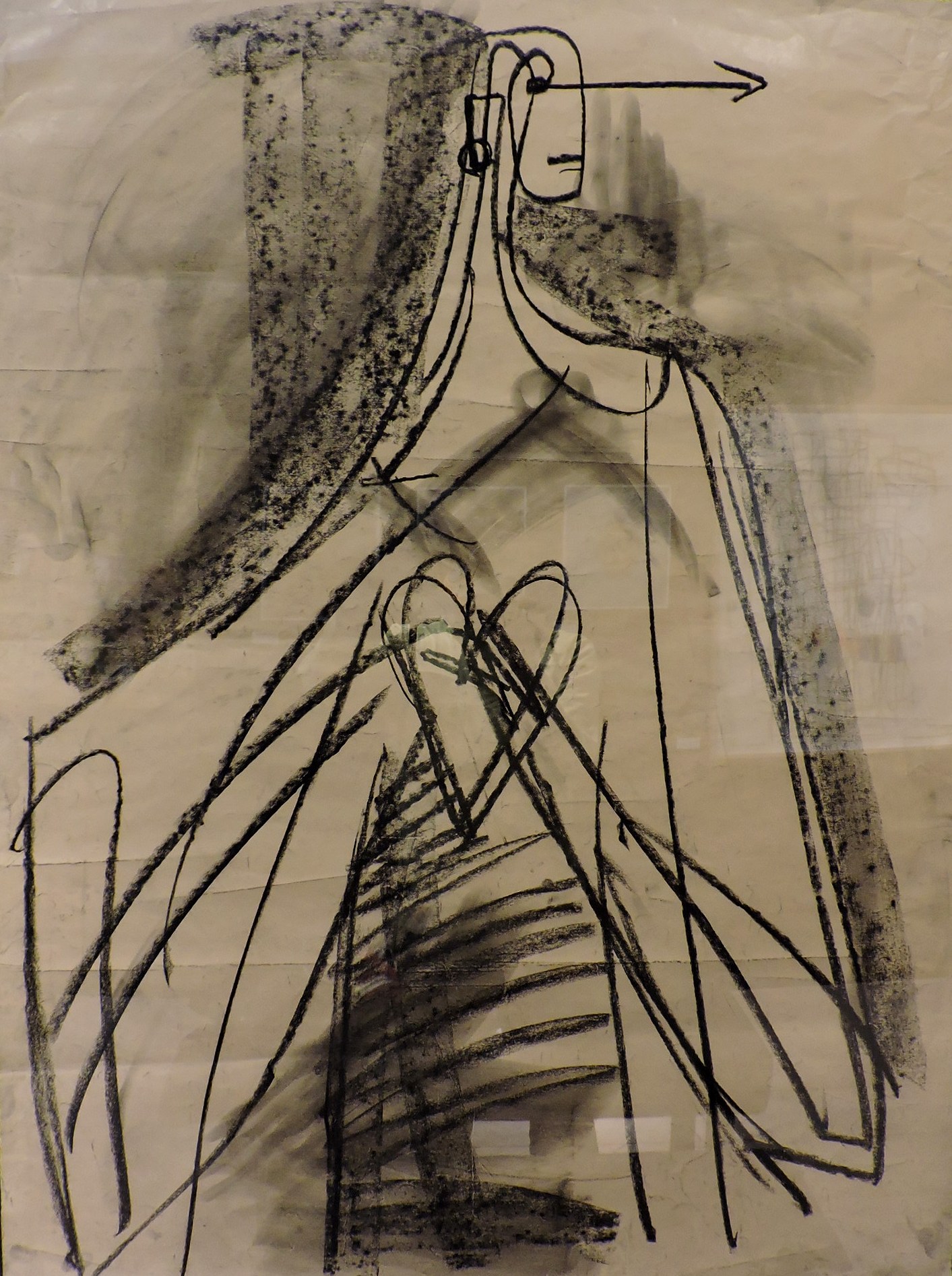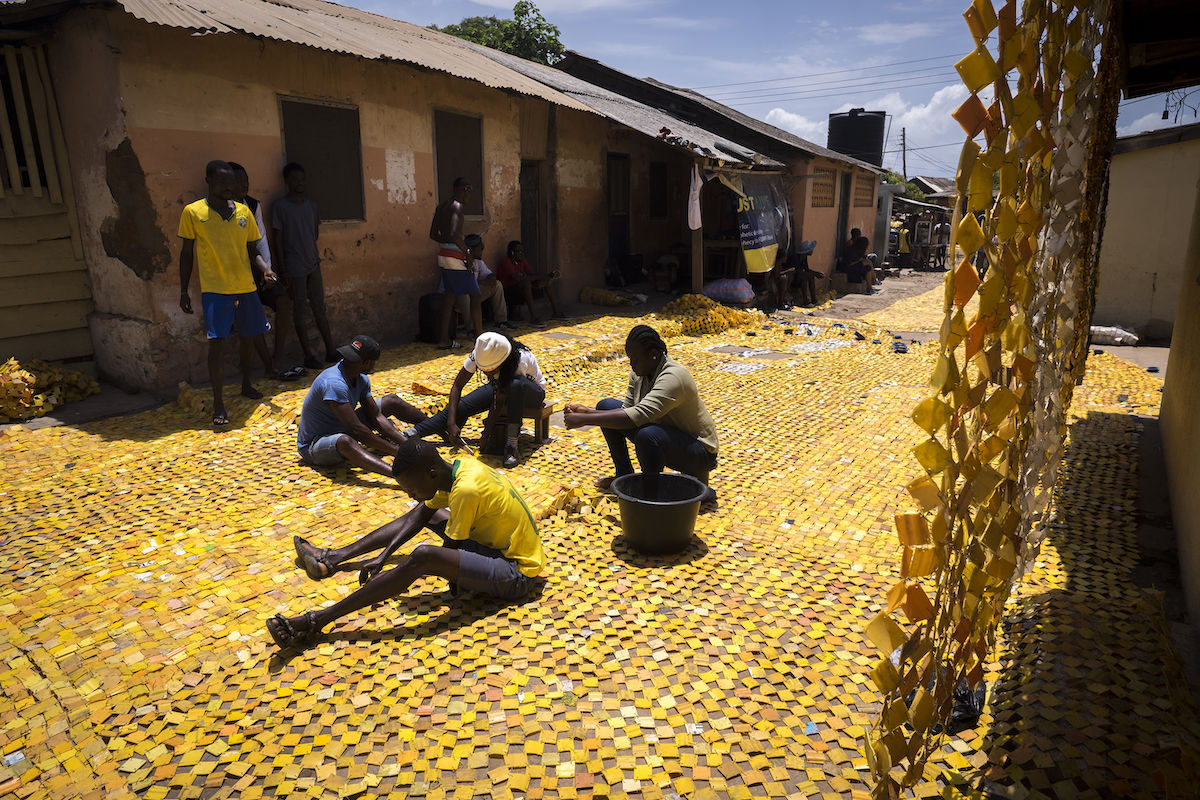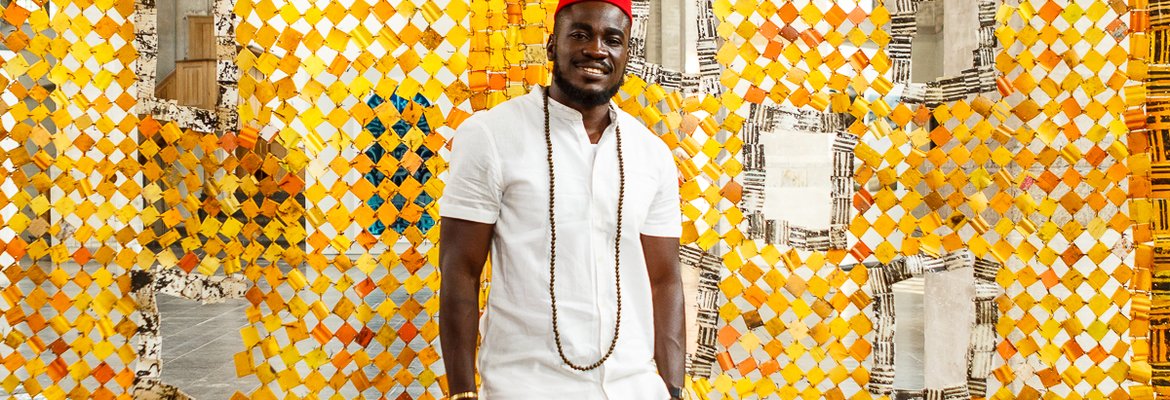The moment I heard Stacey Bartels, (owner at Framed Gallery in Cleveland Ohio) mention Serge Attukwei Clottey during the CAN Journal Winter 2021 launch party with Michael Gill, excitement raced through me. “Serge Attukwei Clottey in Cleveland Ohio!” I exclaimed. The chance to finally see one of my muses work in person was a dream realized. Global Trot, the large open woven tiled work, resembling the shape of Africa, greeted me as I walked into the gallery space. His large draping yellow tapestries of plastics have traveled worldwide, gracing prominent galleries in Milan, Berlin, S. Africa, Amsterdam, New York, San Francisco, and Los Angeles. Serge’s mixed media collection of plastic tiled collages and drawings popped against the black painted walls of Stacey Bartels gallery. Serge has been a member of High Art Fridays (HAF) since 2016, and he has been featured many times with his unique and prolific artistic journey. Serge comes from a line of prominent Ghanaian artists, including El Anatsui, Patrick Tagoe-Turkson, Ibrahim Mahama, and many others who follow a tile construction of tapestries in plastic, metal, and textile.
Serge was indeed one of the many international artists that directly impacted my current work in plastic. The environmental impact these artists are having on their communities is profound. Both Serge and Patrick Tagoe Turkson’s utilization of the tile form and the weaving technique influenced my work. I fixed my eyes on Serge’s wire, which had a hypnotizing effect on me as I followed his wire weaving pattern. I was curious about how he cut the tiles; the plastic’s thickness would require a methodology other than hand cutting. I have developed a form of arthritis in my thumb from the repeated cutting motion.
Serge’s work with the ubiquitous yellow containers called Kufuor or jerry cans linked to John Kufuor (the second President of Ghana), is historically linked to the severe water shortages in Accra during Kufuor’s tenure. Afrogallonism, the concept created by Serge reflects the intersection of environmental and social injustices. The yellow containers originated in Europe and were brought to Ghana as cooking oil canisters, reused to store water and petrol. Their prevalence in his communities caught Serge’s attention, becoming a thesis in much of his artistic movement. Serge has traveled to Austria and the Netherlands for art residencies.
His work combines activism and art, addressing society’s culture, politics, combining science with the arts and economic inadequacies in the world. The art implicates both the individual and the government. It urges people into action and attempts to rectify the current state of ignorance.
[kopa_blockquote border=”left”]You know art is about humans; the galleries create a distance from that. So I’m very challenged about this and make sure that people can come and see the performances so we can create dialogue. I’m not saying I’m done with galleries, but I just want to share art close to people so they can embrace it. Serge Attukwei Clottey [/kopa_blockquote]
One of Serge’s most recent large-scale projects was his Yellow Brick Road installation in Labadi, a neighborhood in Accra, Ghana. The patchwork of yellow woven plastic squares covering the area’s dirt streets and occasionally draped over the walls and roofs of buildings. Yellow Brick Road signifies the country’s historical struggles, resilience, and resourcefulness of the Ghanaian people. Serge plans to replicate a smaller version of this installation in Los Angeles.
HAF: Stacey, first I want to thank you for inviting me to your gallery; I like the way you have installed Serge’s work. How did you learn about Serge?
Stacey: I’ve known about him for quite some time. I have a friend in LA, California who knows Serge personally. One of the suggestions was sending Serge this way to spread the wealth. Having shown his work in galleries becomes too expensive for the average person to afford. Serge wants to democratize his work in that way. My friend in LA got in touch with Serge about my gallery, and I was able to choose eighteen pieces that I thought would fit well in the space. He did a performance piece called “my mother’s wardrobe.” I heard him in an interview talking about his mother who passed away. He was the only child and was not allowed to get any of his mother’s belongings. He felt to honor her, he performed dressing up in women’s clothing.
HAF: The space that Serge’s work hangs is interesting, and the black painted walls add a unique touch to Serge’s work. Can you tell me about this space?
Stacey: We are rebranding this section of Framed and will bring a different caliber of artists on this side of the space. The two galleries are one and the same. Serge is the first artist to be shown in Stacey Bartels gallery.


